 OCD™ Pellets will support the bone and joint health of horses in all disciplines and stages of life.
OCD™ Pellets will support the bone and joint health of horses in all disciplines and stages of life.
The main role of the equine skeleton is to provide structural support. Minerals and vitamins are all required in varying amounts for the maintenance of the horses’ bones and joints at different stages of his life. Most people think that bone is a static structure - like a pillar of plaster. Bone continually undergoes remodeling, replacing and repairing itself. Heavy grazing, farming and fertilization has left the soils lacking in many of the vitamins and minerals necessary to the skeleton system. The relationship between nutrition and supplements for the development of the bone and joint is enormous. Providing the correct nutrition in the form of supplements is vital for horses. Far too many horse owners think that early development in their horses just naturally takes place without considering the need of supplements to build a strong foundation for a future athlete.
Broodmares
Broodmares have specific bone nutritional requirements that differ from other classes of horses. There are differences both in the amount and in the nutrient concentration needed. Research has shown that trying to make up for nutritional deficiencies after foaling does not work and can lead to developmental orthopedic disease. The mare must provide the necessary nutrients stored within her own bones to create the skeleton of the foal in utero. Initial mineralization of the cartilage of the bones of foals takes place in the first three months of pregnancy and continues at an accelerated pace through the first year of life.
One of the best and easiest ways to ensure that mare and foal get all the micro nutrients they need for the skeletal development the first three months (the first trimester) of the gestation is feeding of OCD™ Pellets, resulting in healthier foals with strong bones.
Weanlings and Yearlings
During this time serious bone conditions can develop that might restrict the athletic potential of a horse. In the first 12 months, skeletal growth occurs faster than weight gain. At 6 months of age bone mineralization in horses is 68% complete. Managing growth during this time is very important to prevent excessive weight gain that causes bone abnormalities and long-lasting skeletal problems. The period between three and nine months of age appears to be the most precarious for the foal in terms of DOD (Developmental Orthopedic Disease). With good management and OCD™ Pellets nutritional support, it is possible for horses to build stronger bone.
Young Horses and Horses in Training
When raising and training horses, we attempt to maximize production and performance capability while at the same time minimizing the possibility of developmental diseases and athletic injury. A horse moving at race speed will place three times its body weight in force on the lower limb. The strength of the bones of the legs must bear the loads created by exercise and training. Radiographic studies on the acquisition of bone mineral in horses from birth to 27 years of age have shown that maximum bone mineral content (BMC) is not achieved until six years old.
At a recent Equine Science Symposium, researchers from Kentucky Equine Research presented findings on skeletal adaptations with the onset of training in Thoroughbreds. The researchers reported that when yearlings leave the breeding farm and enter training, major changes occur in their skeletons. Nunamaker et al. (1990) stated that clinically, it is common to observe fatigue fractures (bucked shins) occurring in horses from five months into training. The relationships between growth, nutrition, bone strength and development, body weight, and the forces applied to bone are all orchestrated in a careful balance when optimal bone growth is achieved. OCD™ Pellets addresses the nutritional requirement for a stronger bone matrix with increased bone density permitting the horse to achieve his potential free from injury.
Mature and Older Horses
As horses get older, their joints start to show the wear and tear that comes with age. It is very important that vigilant attention and timely responses to whatever abnormalities arise are resolved before they become full-blown problems. Maintaining a horse’s soundness can be difficult at any age, but geriatric horse have the added burden of years of wear and tear of slow, insidious orthopedic damage that often catches up with them later in life. When a horse is more than fifteen years of age, the cartilaginous tissues wear down rapidly. The tissues degenerate faster than the time taken by the body to make new ones. The joint becomes destabilized and inflamed. Mature and older horses that are experiencing a degree of joint pain due to previous injuries or simply age show remarkable recovery and are able to experience a better quality of life with the introduction of OCD™ Pellets to their daily diet.
Assure your older horses the quality of life they deserve with the introduction of OCD™ Pellets to their daily diet.







